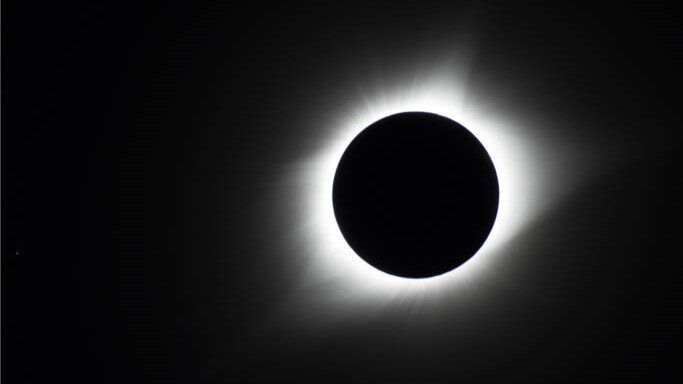We’re one week away from the next total solar eclipse on April 8.
If you miss it, the next one that can be seen from the United States is in 2044.
People all over the world anticipate this rare astronomical event, marking their calendars and making plans to witness the solar eclipse firsthand. Whether they’re seasoned astronomers or casual observers, the prospect of seeing the moon pass in front of the sun ignites a sense of wonder and curiosity.
“This substantial gap between total solar eclipses is due to the specific alignment of the Earth, moon and sun required for them to happen,” said Dr. Sarah Morrison, assistant professor of astronomy at MSU.
The total solar eclipse on April 8 will take place in the early afternoon, with the duration spanning a few hours. The path of totality will pass through Missouri, including cities like West Plains and Poplar Bluff.
In Springfield, there will be 97% obscurity around 1:54 p.m.
A viewing event will be held from 1-2:30 p.m. at Plaster Stadium for students to enjoy the eclipse. Free viewing glasses will be handed out to the first 1,000 attendees.
Understanding the science
Scientists predict the path of totality by tracking the orbits of the Earth, moon and sun. They analyze the alignment of these celestial bodies to pinpoint when and where an eclipse will occur. The precision of these predictions has improved over time, allowing for accurate forecasts of eclipse events.
“Eclipses provide unique opportunities for scientific research,” Morrison said. “They allow for the study of the sun’s corona and provide a test for theories like general relativity. Additionally, eclipses offer a chance to observe celestial phenomena, such as comets, and study how eclipses impact weather and temperature.”
What to expect
Historically, eclipses have held various cultural and historical significance. They have been interpreted as omens or signs of impending events in different cultures. The ability to predict eclipses was once considered remarkable and even alarming, demonstrating a deep understanding of celestial mechanics.
Much like humans, animals and wildlife can exhibit various responses to solar eclipses.
“They may react to the changes in light and temperature associated with an eclipse,” Morrison said. “Some animals, especially those active during dusk or dawn, might become quieter or more vocal.”
Observable phenomena such as shadow bands passing across the ground during an eclipse could also influence animal behavior.
Viewing safety
While viewers in Springfield will not see a total solar eclipse, eclipse glasses are still necessary to view the event safely.
“It’s essential to emphasize the importance of protecting both eyes and camera equipment during the eclipse,” Morrison said. “Staring at the sun without proper eye protection, particularly during partial phases, can cause permanent damage to the retina.”
Eclipse glasses are specially designed to protect the eyes from the harmful rays of the sun during a solar eclipse. So, it’s crucial to ensure the glasses are legitimate and will provide adequate protection.
Morrison notes viewers should be cautious of counterfeit glasses and ensure they obtain eclipse glasses from reputable sources. The American Astronomical Society offers guidance on finding legitimate eclipse glasses. The glasses do have an expiration date and may degrade over time, especially if they are not stored properly. Exercise caution when reusing old eclipse glasses, as their effectiveness may have diminished.
For cameras, use solar filters to prevent damage to the camera’s detector.
Explore opportunities in physics, astronomy and materials science


Leave a Reply